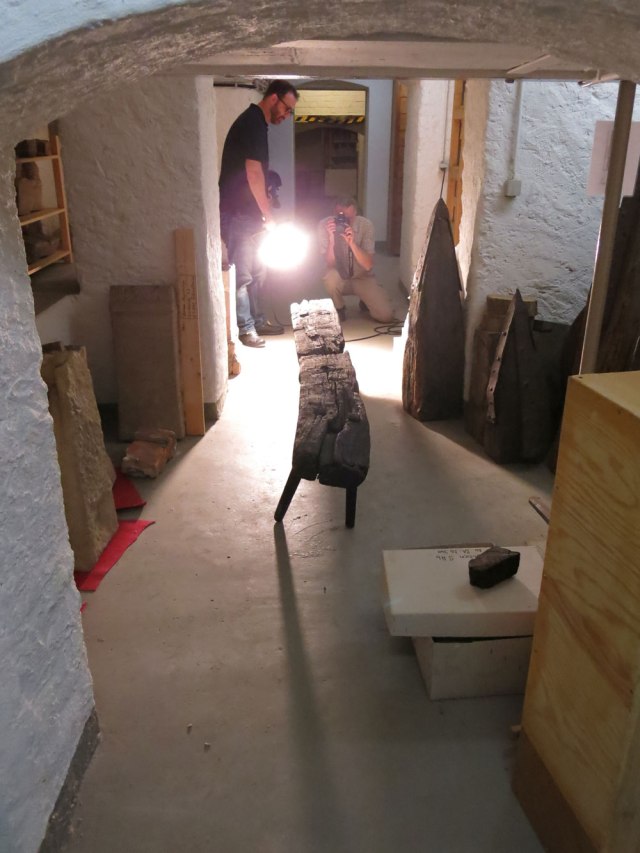
Before heading out for Charleston, S.C., to visit my dad, I added a couple face vises to my circa 1505 Holy Roman Workbench. These vises have no screws and no real jaws. Instead they clamp the work with a wedge.
The vises are merely large notches in the benchtop, so “installing” them took about an hour of time.
These “vises” – if you can call them that – are based on paintings and drawings of workbenches that Suzanne “Saucy Indexer” Ellison and I have dug up during the last 18 months for my next book. In this case, I’ve made a notch in the end grain of the benchtop and in the edge of the benchtop. Both sorts of notches are shown in paintings and I want to sort out if there’s any difference between them.

I cannot say yet if they work differently, but I can say the notch on the edge grain was much easier to saw and bash out. When I return home on Sunday, I’ll get to work installing a wide variety of other long-forgotten bench accessories that Suzanne and I have unearthed.
As I mentioned earlier, the scope of this book has expanded far beyond where it began, with Roman workbenches. The workholding schemes we have found are ideal for both low benches and high benches. And both sorts of benches – high and low – have always existed side-by-side, as they do today.
I’m also exploring how low benches developed lots of accessories for building chairs (both shaved and turned), boats, baskets and all sorts of items that require steam-bent wood. I think I’ve also convinced Suzanne to write a chapter of the book that will detail the paintings we’re exploring and the socio-economic conditions in which they were made.

Oh, and the book is also part travelogue. It begins at the summit of Mount Vesuvius and ends below the ground in a German forest.
Believe it or not, all these disparate elements are stitched together without any Kierkegaardian leaps.
So, after a lot of thought, I’ve decided to title the book: “Ingenious Mechanicks: Early Workbenches & Workholding.” We’re on track to finish writing it by the end of 2017. So we should have it released by March 2018.
— Christopher Schwarz, editor, Lost Art Press
Personal site: christophermschwarz.com